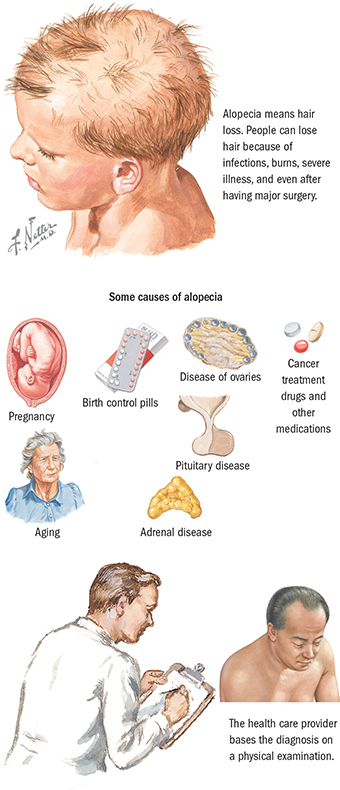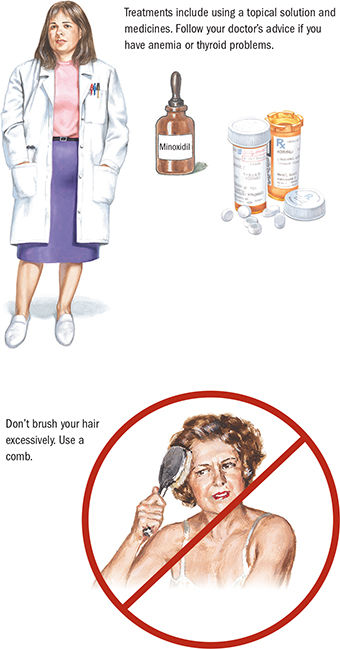
Alopecia means hair loss. Alopecia areata is hair loss in round patches on the scalp. Alopecia universalis refers to hair loss over the whole body.
Heredity plays a major role in hair loss. Other contributing factors are the presence of male hormones, worry and stress, poor nutrition, low red blood cell count, thyroid problems, pregnancy, ringworm of the scalp, and medicines such as oral contraceptives, anticancer drugs, and statins.
Hair can also be lost because of hairstyles, pulling on hair, infections, burns, severe illness, and even after having major surgery.
Alopecia can be permanent or temporary (such as when caused by cancer treatment drugs).
Hair can be lost from any part of the body, the scalp, eyebrows, underarms, genital area, arms, and legs. It can occur gradually or suddenly. Itching may occur, for example, when ringworm is the cause.
The health care provider bases the diagnosis on the physical examination. Blood tests may be done to check for anemia, infection, arthritis, or hormone imbalances. Analysis of hair can also be performed.

Treatment doesn’t always work. The health care provider may suggest a liquid medication (minoxidil) to put on areas with alopecia. It may help hair regrow but its effects vary greatly. The health care provider may sometimes inject medicine (anti-inflammatory steroids) into small areas with alopecia.
Hair transplants can restore hair, and wigs and hair weaves may reduce the look of alopecia.
For alopecia on the scalp, the health care provider can use scalp reduction therapy. In this therapy, the health care provider removes a strip of scalp about every few weeks until edges of hair meet, or until scalp tissue becomes too thin.
Men with male pattern baldness can take finasteride (PropeciaR), a prescription drug taken by mouth, to minimize alopecia and promote regrowth of hair.
An illness causing alopecia, such as infection, ringworm, anemia, and hormone imbalance, will need treatment. Alopecia with reversible causes, such as pregnancy and stress, usually stops, and new hair grows, but this may take several months.
Contact the following source:
Copyright © 2016 by Saunders, an imprint of Elsevier, Inc
Ferri’s Netter Patient Advisor